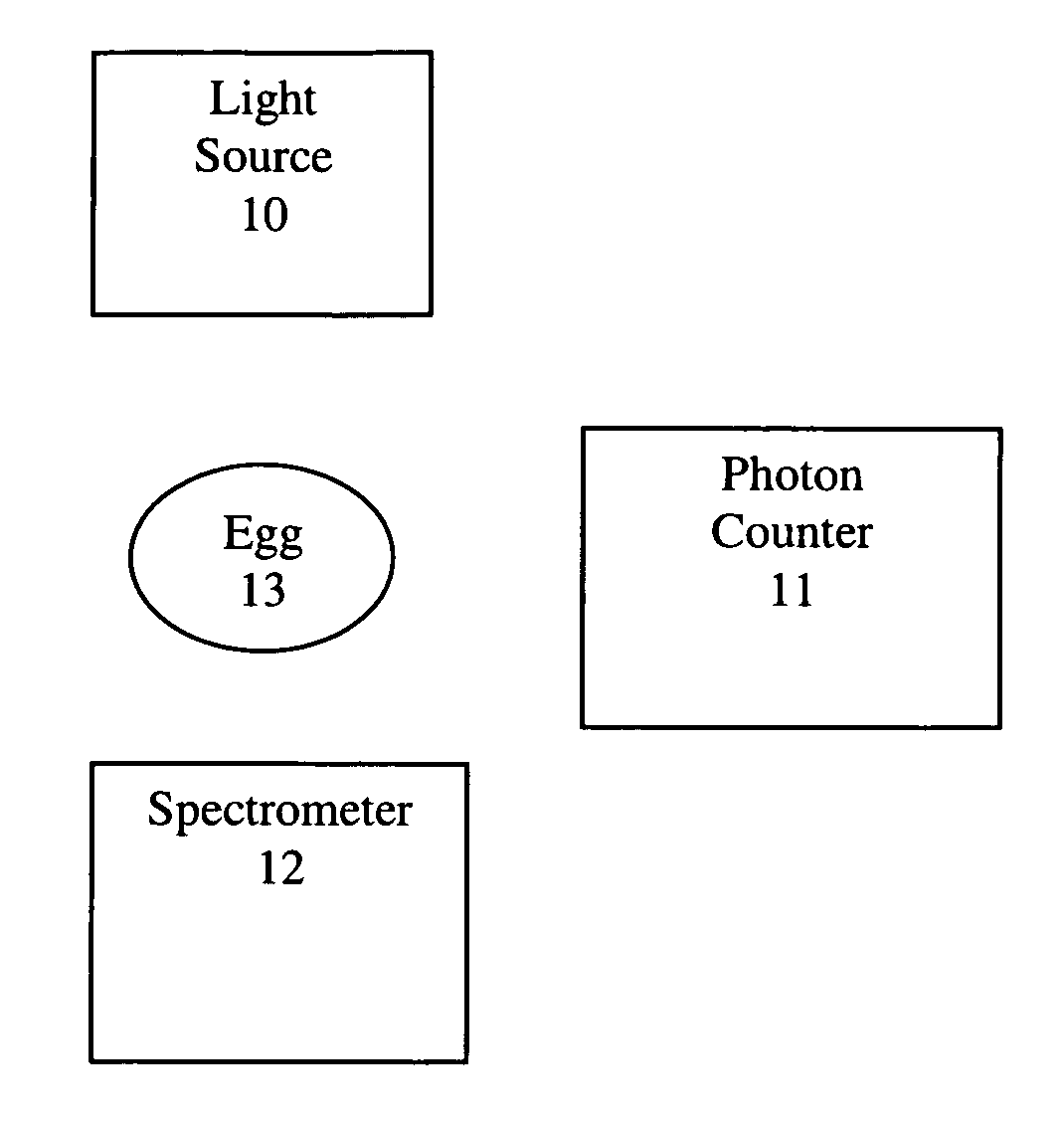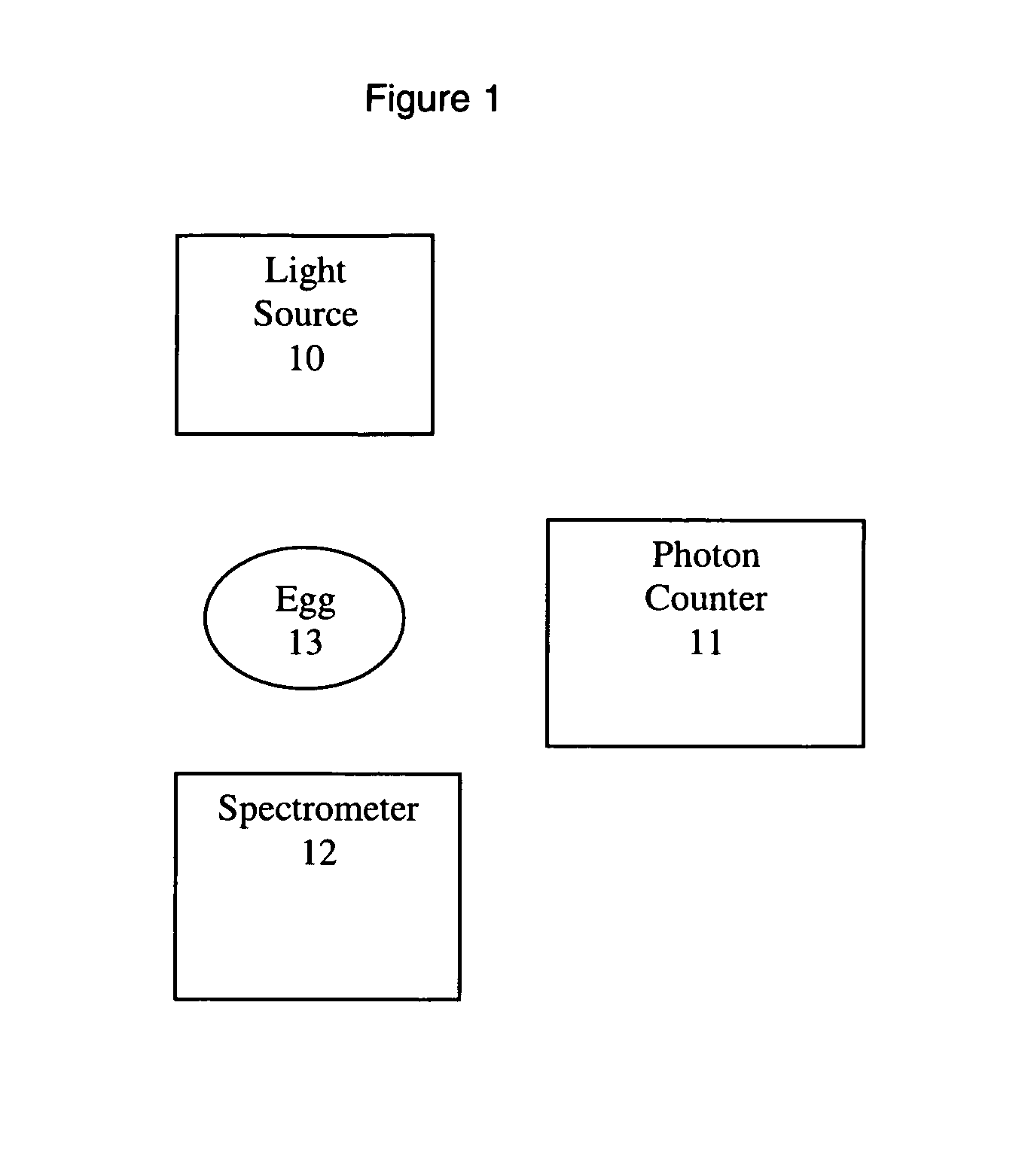Avian egg fertility and gender detection
a technology for detecting the fertility and gender of avian eggs, applied in the field of avian eggs, can solve the problems of limiting the economic advantage of such an approach, not applicable to egg segregation, and not allowing a sufficiently accurate fertility/gender detection
- Summary
- Abstract
- Description
- Claims
- Application Information
AI Technical Summary
Problems solved by technology
Method used
Image
Examples
Embodiment Construction
[0009]The static physical structure of the invention consists of three major components, i.e., a specially selected light source, a photon counter and a spectrometer which may or may not be connected to a power source and computer display.
OPERATION
[0010]The light source (10) bio-stimulates the egg to emit a higher than normal flux of biophotons, and delayed luminescence. The photon detector (11) measures (counts) the photon emission from the egg (13). The spectrometer (12) measures the spectrum of the photon emission. Egg fertility is determined by the difference in the emitted photon flux of the fertile and unfertile eggs that is registered by the photon detector (11). Distinction between the two types of eggs is made possible by the higher simulation of the fertile egg that results from the light stimulation. The difference in photon intensities of the light-stimulated fertile and unfertile eggs is sufficiently high to make the technology applicable to pre-incubated eggs. Egg gend...
PUM
| Property | Measurement | Unit |
|---|---|---|
| luminescence intensity | aaaaa | aaaaa |
| delayed luminescence emissions | aaaaa | aaaaa |
| spectra | aaaaa | aaaaa |
Abstract
Description
Claims
Application Information
 Login to View More
Login to View More - R&D
- Intellectual Property
- Life Sciences
- Materials
- Tech Scout
- Unparalleled Data Quality
- Higher Quality Content
- 60% Fewer Hallucinations
Browse by: Latest US Patents, China's latest patents, Technical Efficacy Thesaurus, Application Domain, Technology Topic, Popular Technical Reports.
© 2025 PatSnap. All rights reserved.Legal|Privacy policy|Modern Slavery Act Transparency Statement|Sitemap|About US| Contact US: help@patsnap.com


